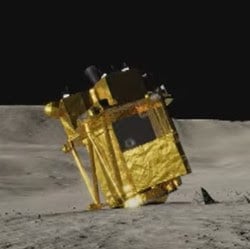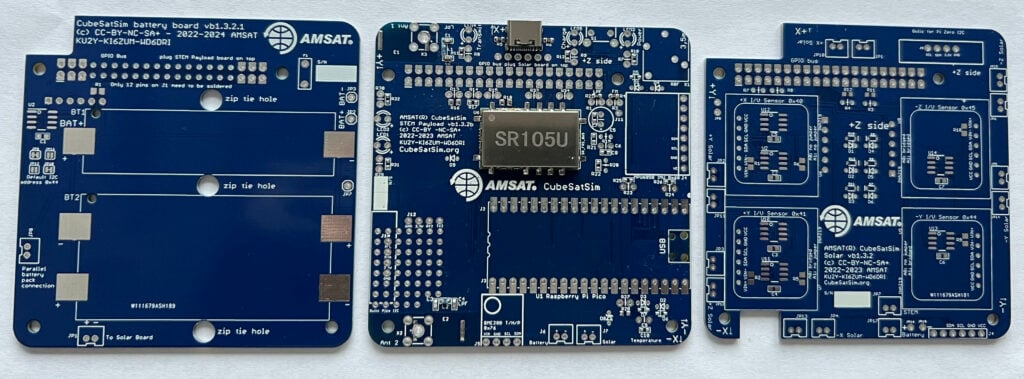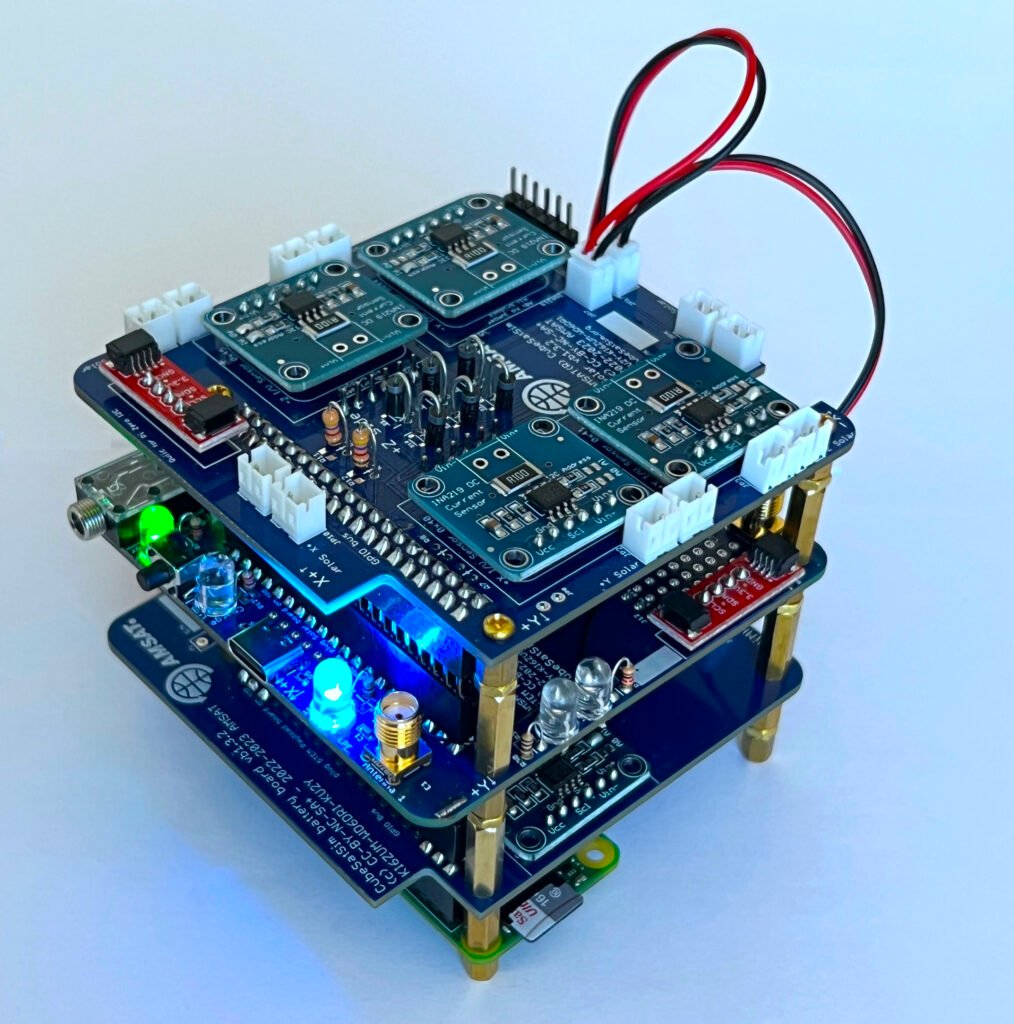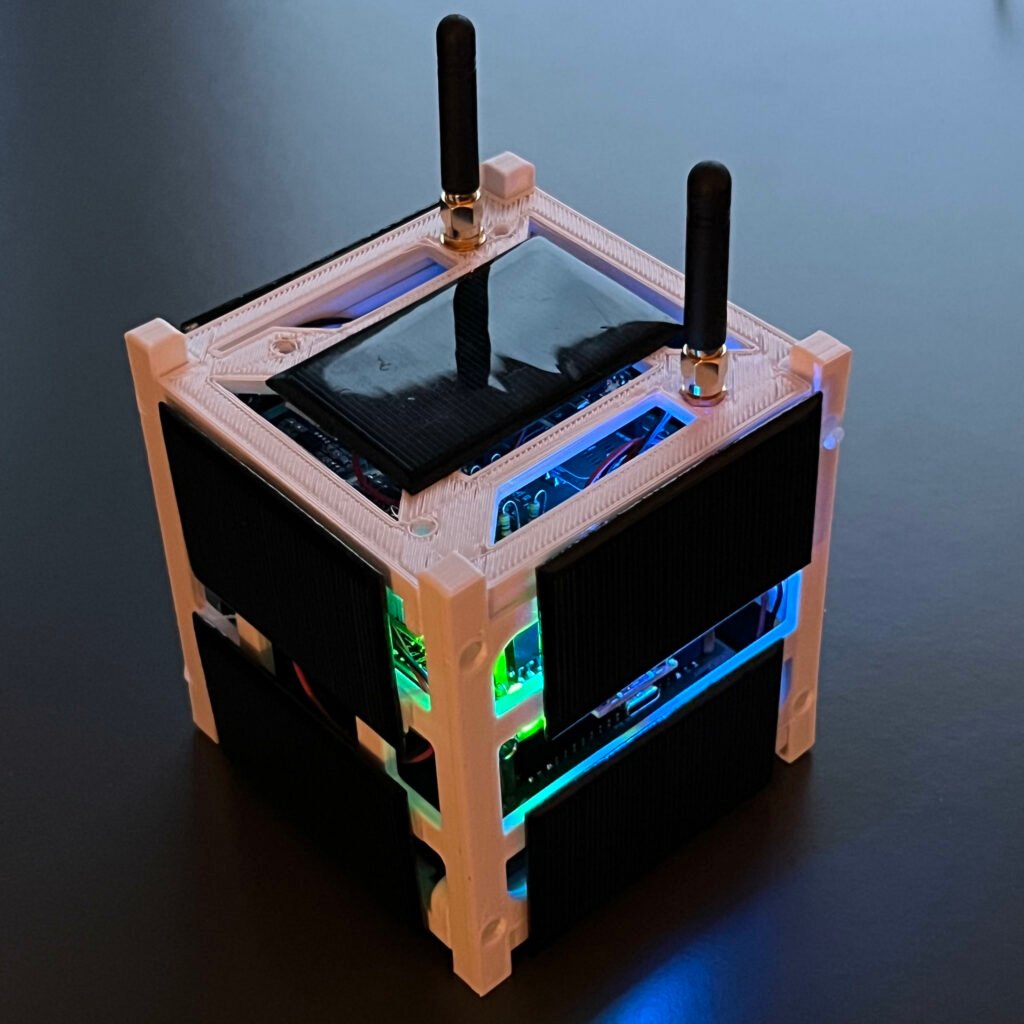In this edition:
* ESA Satellite Communications Group Explores Future Amateur Satellite Payload
* GreenCube IO-117 Continues Operations Beyond Expected February 5th Passivation
* JS1YMG: Decoding the First Moon-Based Ham Radio Station’s Telemetry Signals
* GridMasterMap Satellite Top 100 Rovers February 2024 Rankings
* Changes to AMSAT-NA TLE Distribution for February 9, 2024
* ARISS News
* Upcoming Satellite Operations
* Hamfests, Conventions, Maker Faires, and Other Events
* Satellite Shorts From All Over
The AMSAT News Service bulletins are a free, weekly news and information service of AMSAT, the Radio Amateur Satellite Corporation. ANS publishes news related to Amateur Radio in Space including reports on the activities of a worldwide group of Amateur Radio operators who share an active interest in designing, building, launching and communicating through analog and digital Amateur Radio satellites.
The news feed on https://www.amsat.org publishes news of Amateur Radio in Space as soon as our volunteers can post it.
Please send any amateur satellite news or reports to: ans-editor [at] amsat.org
You can sign up for free e-mail delivery of the AMSAT News Service Bulletins via the ANS List; to join this list see: https://mailman.amsat.org/postorius/lists/ans.amsat.org
ANS-042 AMSAT News Service Weekly Bulletins
To: All RADIO AMATEURS
From: Radio Amateur Satellite Corporation
712 H Street NE, Suite 1653
Washington, DC 20002
DATE 2024 Feb 11
ESA Satellite Communications Group Explores Future Amateur Satellite Payload
Frank Zeppenfeldt, PDØAP, representing the European Space Agency (ESA), provided key insights during a presentation on February 4th at the FOSDEM 2024 conference held in Brussels, Belgium. The discussion centered around ESA’s initiative to collaborate with the amateur satellite community in defining a prospective payload for Medium Earth Orbit (MEO) or Geostationary Orbit (GEO). The ESA’s involvement aims to build upon the success of the QO-100 payload in geostationary orbit, fostering innovation and technological advancements.
During the FOSDEM conference, the ESA Satellite Communications Group outlined preliminary ideas, stressing the significance of engaging with the Software-Defined Radio (SDR) community. The primary objectives include consolidating requirements, exploring diverse payload options, addressing user segments, and thoroughly examining financing, procurement, and operational scenarios for a potential MEO/GEO amateur payload.
The project’s scope encompasses the consideration of various payload options and trade-offs, encompassing aspects such as frequency bands, analog or digital transmission, on-board SDR/Linux/GPU-box configurations, potential applications, technical risks, inter-satellite links, geographical coverage, degree of centralization, and educational components.
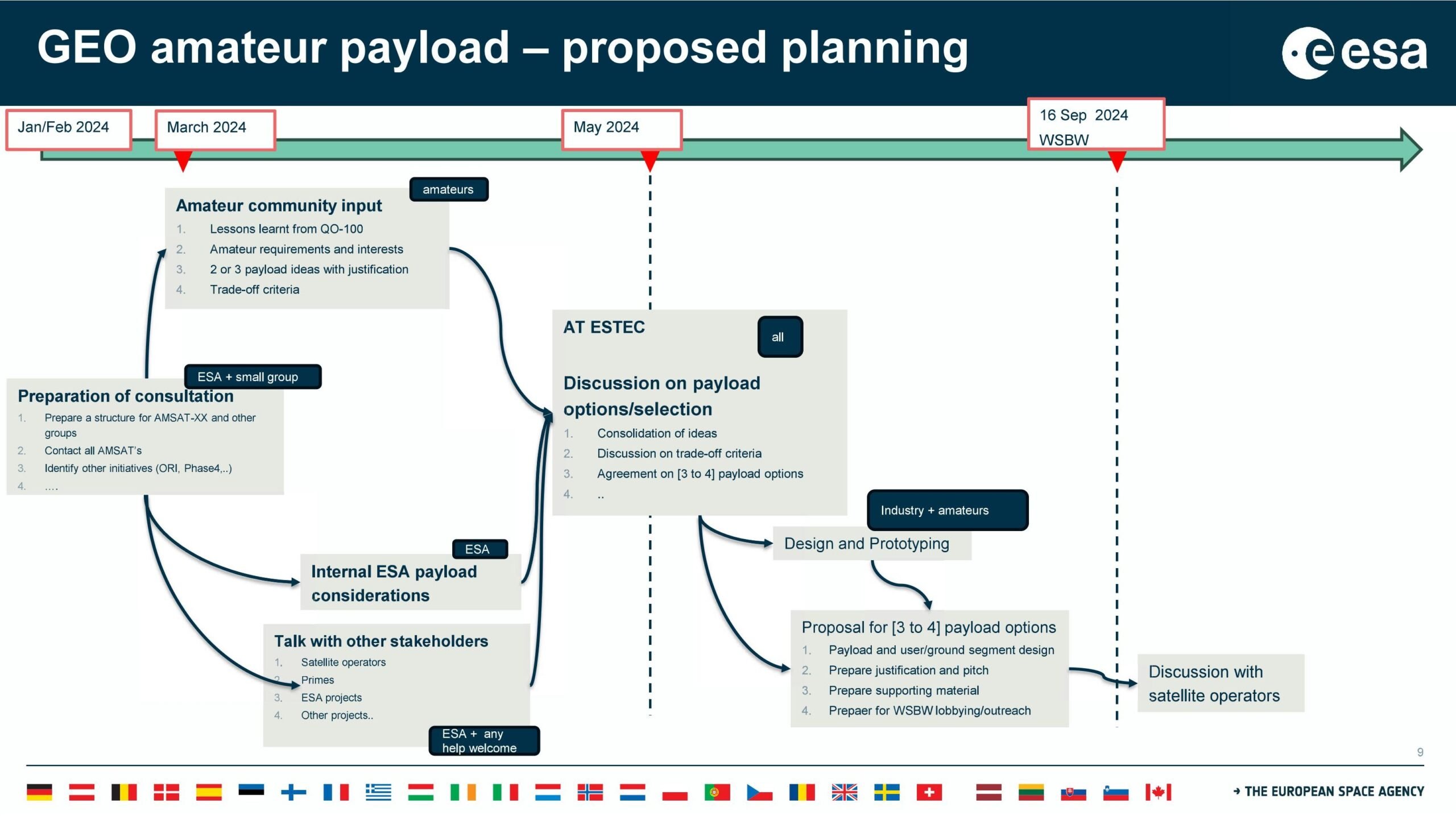
Looking ahead, the ESA has outlined a timeline for the project. In March 2024, the agency intends to solicit input from the amateur satellite community and other stakeholders, guided by valuable insights from the AMSAT community. By May 2024, detailed payload options will be presented for discussion at the European Space Research and Technology Centre (ESTEC) in the Netherlands, with the support of technical expertise.
More information from this presentation including the ten page Slide Deck can be found https://fosdem.org/2024/schedule/event/fosdem-2024-2084-design-of-a-follow-up-qo-100-payload-/.
The culmination of this extensive process is expected in September 2024 at the World Satellite Business Week, where dedicated discussions with satellite operators will be organized. The ESA envisions proposing a selection of payload options at a subsequent FOSDEM conference in 2025, further demonstrating the collaborative commitment of ESA and the amateur satellite community to propel advancements in satellite communications and explore innovative possibilities for future amateur satellite payloads in both GEO and MEO orbits.
[ANS thanks Frank Zeppenfeldt, PDØAP, ESA Satellite Communications Group, for the above information]
GreenCube IO-117 Continues Operations Beyond Expected February 5th Passivation
GreenCube IO-117 satellite continues to function beyond the initially scheduled shutdown of the amateur radio digipeater on February 5, 2024, at 0000 UTC. There have been no recent developments regarding the fate of this widely-used satellite since AMSAT Italia’s announcement on February 2nd that the Italian Space Agency is considering revisiting the decision to decommission it. Originally designed for scientific purposes and placed in MEO orbit, GreenCube satellite has successfully completed its primary mission. The “Save the GreenCube Satellite Digipeater” petition initiated by Peter Goodhall, 2MØSQL, has gained significant traction, garnering over 2,000 signatures to date. The petition, accessible at https://www.change.org/p/save-the-greencube-satellite-digipeater, remains open for further support.
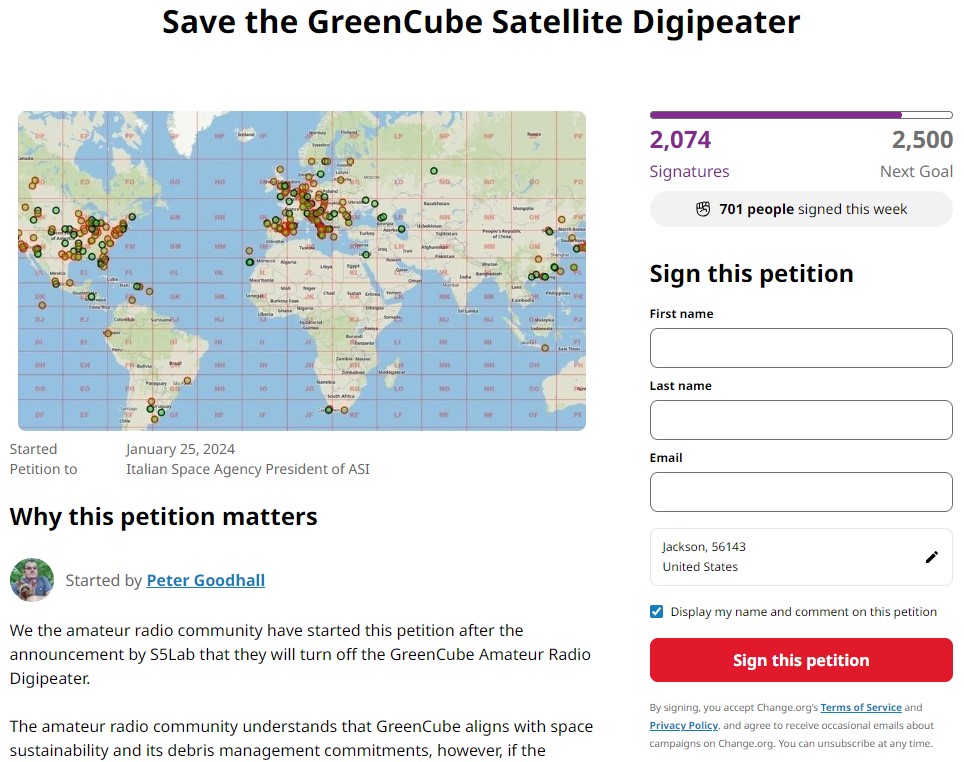
To get a comprehensive view of the considerable amateur radio activity on the GreenCube digipeater, you can explore the GreenCube IO-117 Users Map curated by Doug Papay, K8DP, accessible at https://www.google.com/maps/d/viewer?mid=1Y7O-rWll2QHFTjbBa4ThmZ3AG9ls8Io. According to the latest update, GreenCube has facilitated digipeating for 1,576 unique callsigns and 999 unique grids. This encompasses digipeats from 121 DXCC entities, all 50 US states, all 47 JA prefectures, and 36 out of 40 CQ Zones. Since its launch in July 2022, 846 ground stations have contributed over 3.4 million telemetry and 6.2 million digipeater frames to the SatNOGS database. The top five contributors to the database, in terms of total submissions, are Doug Papay, K8DP, with 1.1M submissions; Dave Webb, KB1PVH, with 734k submissions; Dave Fisher, KGØD, with 576k submissions; Shige Nasu, JH8FIH, with 507k submissions; and Jacob Mol III, N8JCM, with 498k submissions.
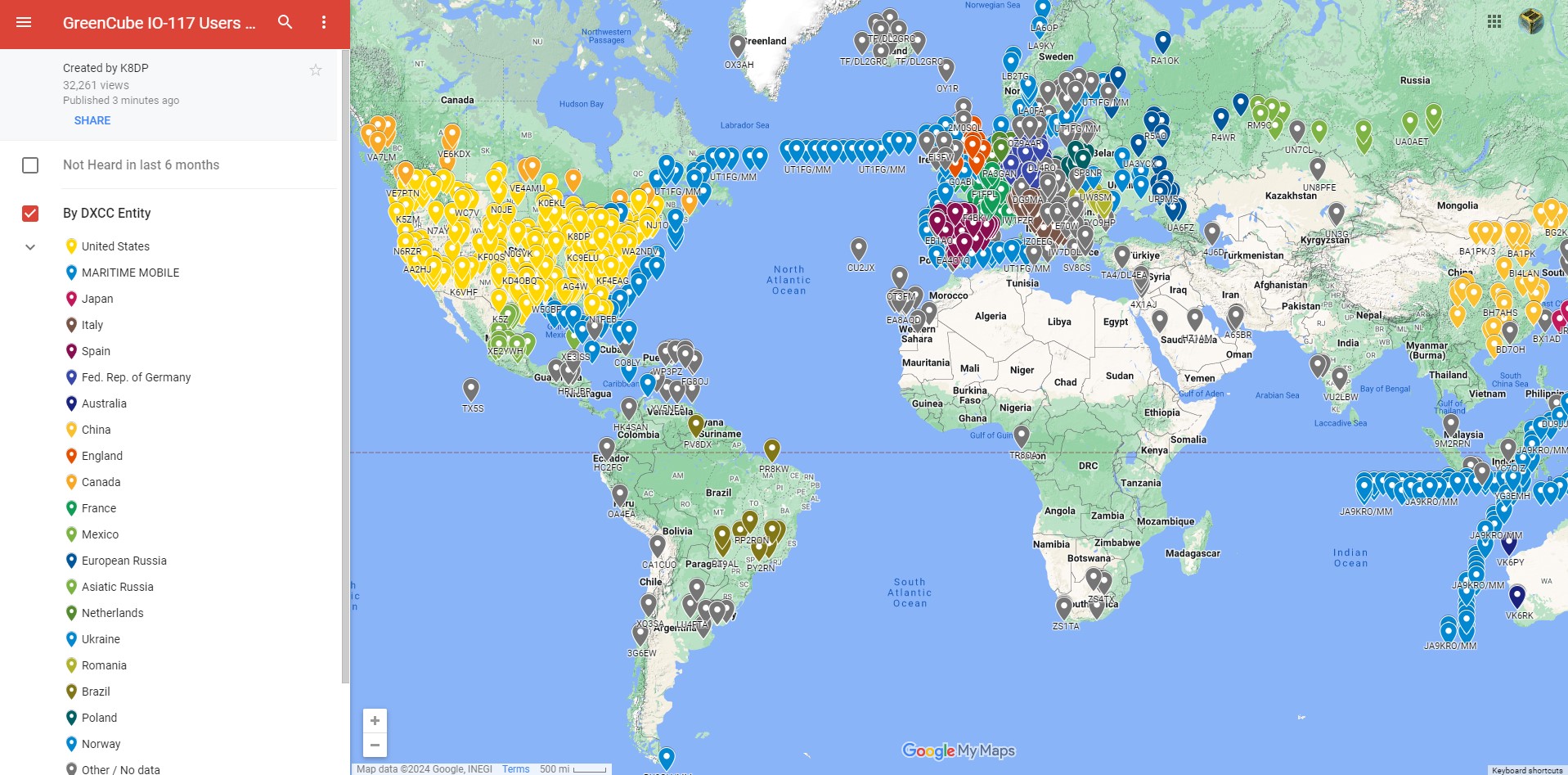
[ANS thanks Doug Papay, K8DP, Peter Goodhall, 2MØSQL, and Carsten Groen, OZ9AAR for the above information]
The 2024 Coins Are Here Now!
Help Support GOLF and Fox Plus.
Join the AMSAT President’s Club today!
JS1YMG: Decoding the First Moon-Based Ham Radio Station’s Telemetry Signals
JQ1ZVI (JAXA Ham Radio Club, JHRC) recently obtained a radio station license from Japan for the lunar rover LEV-1, designated JS1YMG, marking a historic moment as the first amateur radio station on the moon. This milestone achievement follows Japan’s SLIM lunar mission, which saw the deployment of two lunar excursion vehicles, LEV-1 and LEV-2.
LEV-1, designed for hopping mobility, features direct-to-Earth communication capabilities via UHF band antennas from the MINERVA and OMOTENASHI projects. Equipped with two wide-angle visible light cameras, LEV-1 conducts lunar exploration while carrying essential science payloads, including a thermometer, radiation monitor, and inclinometer, providing valuable insights into lunar conditions and terrain. It actively receives data from its companion rover LEV-2, and this information is transmitted to Earth using its 1 Watt UHF circular polarization antenna, employing Morse code on a IARU coordinated frequency of 437.410 MHz.
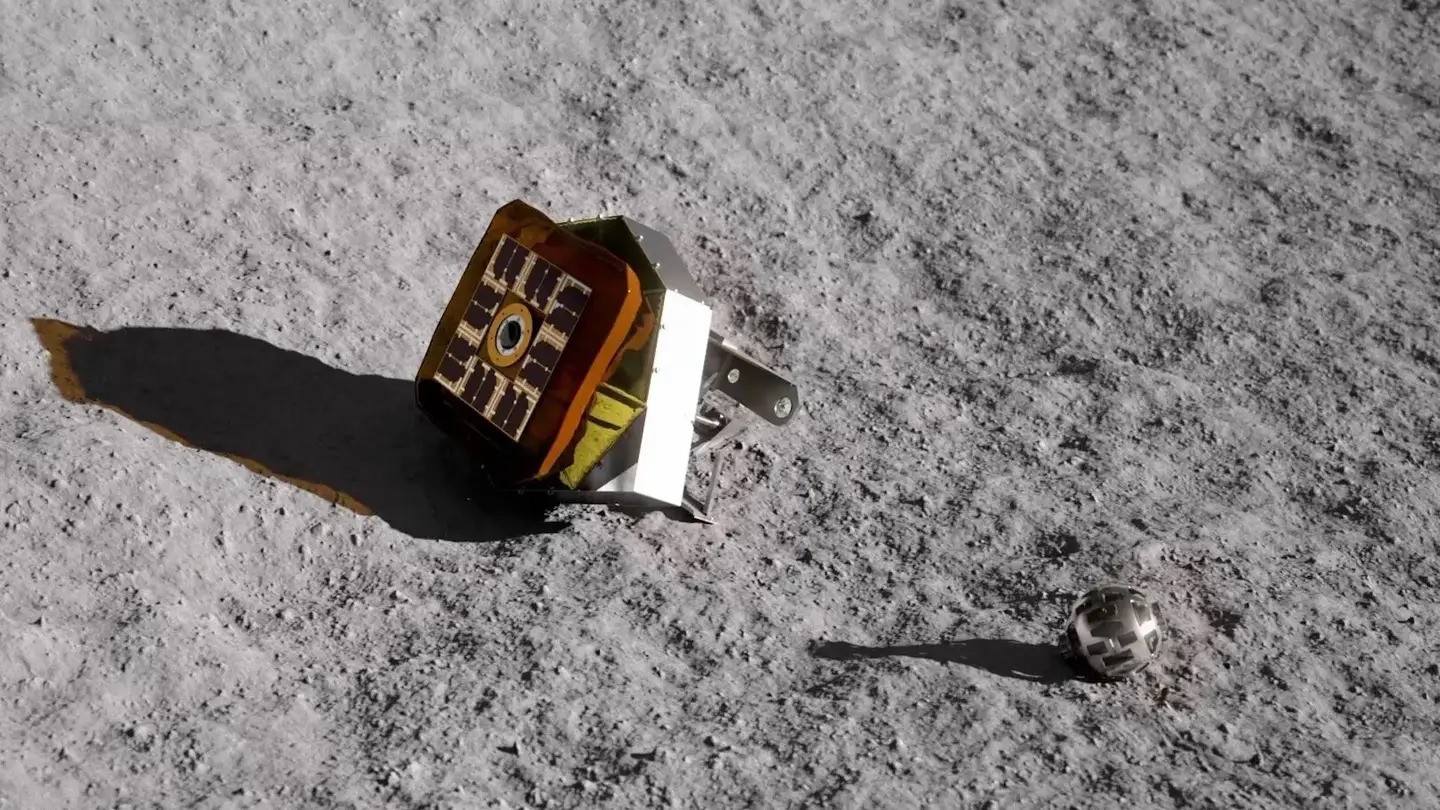
Estévez’s decoding journey involved unraveling the CCSDS coding, a task that posed initial challenges. While the IARU coordination sheet hinted at bitrates and coding specifics, the signal’s unique characteristics required a thorough investigation. The BCJR decoder, a tool used successfully in previous decoding efforts, validated the presence of convolutional coding. The output provided log-likelihood ratios, offering confidence in the correctness of the convolutional code. Further investigations led to the identification of the syncword 0xFAF320, a crucial element in understanding the structure of the transmitted frames.
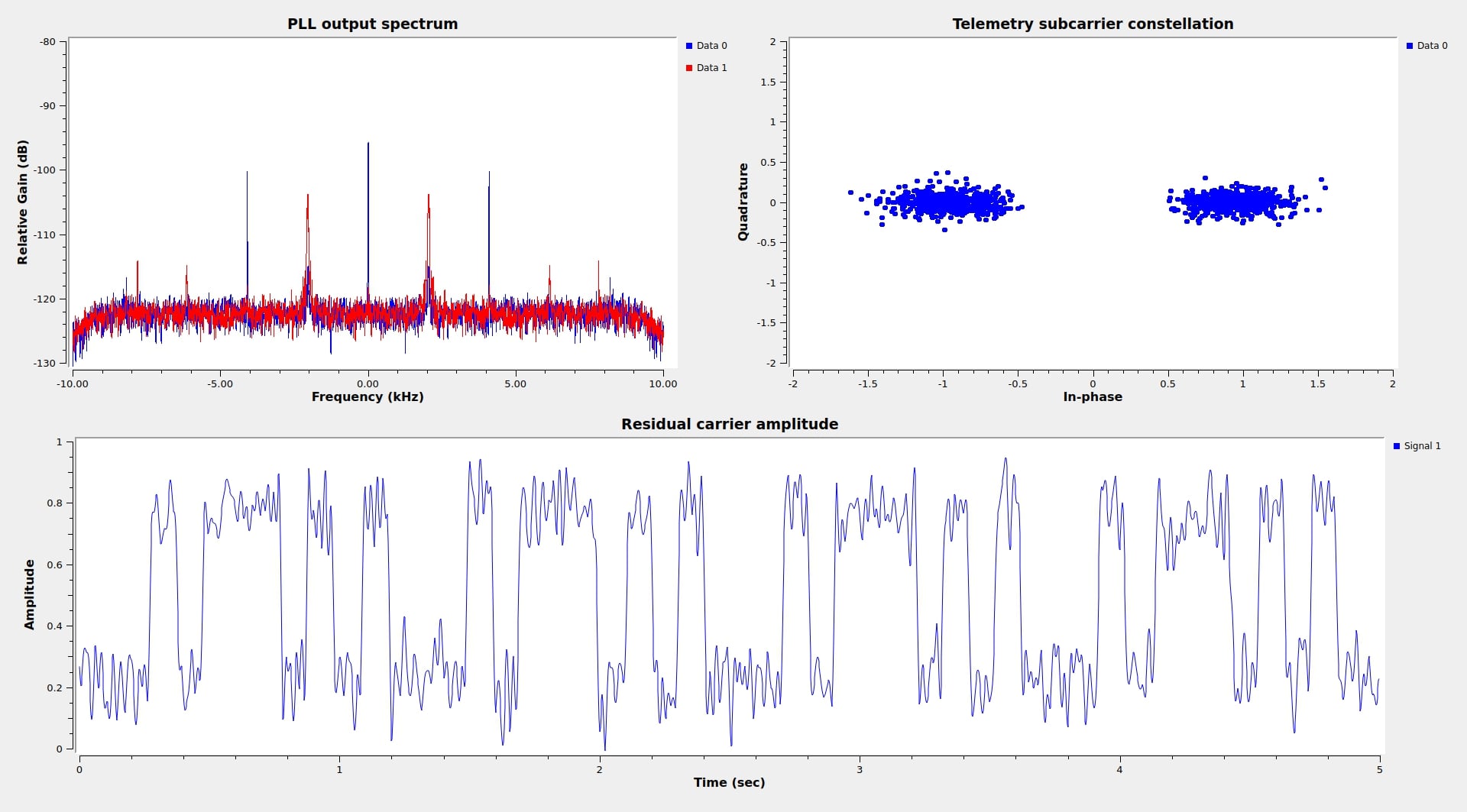
More details on the ongoing efforts to decode LEV-1’s amateur radio transmissions can be found at Daniel Estévez’s website at https://destevez.net/2024/01/trying-to-decode-lev-1/.
This achievement in establishing the first amateur radio station on the Moon opens up new possibilities for lunar communications and amateur radio enthusiasts worldwide. The collaborative efforts of radio amateurs contribute significantly pave the way for future advancements in space communication technologies.
[ANS thanks Daniel Estévez, EA4GPZ, and Hackaday for the above information]
GridMasterMap Satellite Top 100 Rovers February 2024 Rankings
The February 2024 rankings for the Top 100 Rovers (Mixed LEO/MEO/GEO) in satellite operations, as determined by @GridMasterMap on Twitter, has been released. The ranking is determined by the number of grids and DXCC entities activated, taking into account only those grids where a minimum number of QSOs logged on the gridmaster.fr website have been validated by a third party. Grid numbers do not directly reflect the exact number of activations. Satellite operators are encouraged to upload their LoTW satellite contacts to https://gridmaster.fr in order to provide more accurate data.
Updated: 2024-02-07
| 1 | ND9M | 26 | K8BL | 51 | F4DXV | 76 | DF2ET |
| 2 | NJ7H | 27 | KE4AL | 52 | KE9AJ | 77 | WA9JBQ |
| 3 | N5UC | 28 | LU5ILA | 53 | JL3RNZ | 78 | W8LR |
| 4 | JA9KRO | 29 | DL2GRC | 54 | KM4LAO | 79 | OE3SEU |
| 5 | DL6AP | 30 | KI7UNJ | 55 | VE1CWJ | 80 | VE3GOP |
| 6 | WI7P | 31 | VE3HLS | 56 | PA3GAN | 81 | KJ7NDY |
| 7 | UT1FG | 32 | KB5FHK | 57 | VK5DG | 82 | KB2YSI |
| 8 | HA3FOK | 33 | LA9XGA | 58 | N4UFO | 83 | K0FFY |
| 9 | N9IP | 34 | N7AGF | 59 | KI7QEK | 84 | CU2ZG |
| 10 | N6UA | 35 | F4BKV | 60 | SM3NRY | 85 | N0TEL |
| 11 | WY7AA | 36 | XE3DX | 61 | N8RO | 86 | DL4EA |
| 12 | K5ZM | 37 | N6DNM | 62 | PT2AP | 87 | W8MTB |
| 13 | AD0DX | 38 | KE0PBR | 63 | W1AW | 88 | KG4AKV |
| 14 | W5PFG | 39 | KE0WPA | 64 | VA7LM | 89 | VE6WK |
| 15 | DP0POL | 40 | JO2ASQ | 65 | XE1ET | 90 | VE7PTN |
| 16 | AK8CW | 41 | PR8KW | 66 | AA8CH | 91 | HB9GWJ |
| 17 | AD0HJ | 42 | AC0RA | 67 | M1DDD | 92 | AF5CC |
| 18 | WD9EWK | 43 | K7TAB | 68 | VA3VGR | 93 | DK9JC |
| 19 | ON4AUC | 44 | W7WGC | 69 | VE1VOX | 94 | PT9ST |
| 20 | KG5CCI | 45 | EB1AO | 70 | FG8OJ | 95 | JM1CAX |
| 21 | KX9X | 46 | JK2XXK | 71 | PT9BM | 96 | KI0KB |
| 22 | ND0C | 47 | EA4NF | 72 | KI7UXT | 97 | VO2AC |
| 23 | N5BO | 48 | AA5PK | 73 | LU4JVE | 98 | LW2DAF |
| 24 | F5VMJ | 49 | SP5XSD | 74 | YU0W | 99 | N4AKV |
| 25 | DJ8MS | 50 | AD7DB | 75 | N4DCW | 100 | N6UTC |
[ANS thanks @GridMasterMap for the above information]
Changes to AMSAT-NA TLE Distribution for February 9, 2024
Two Line Elements or TLEs, often referred to as Keplerian elements or keps in the amateur community, are the inputs to the SGP4 standard mathematical model of spacecraft orbits used by most amateur tracking programs. Weekly updates are completely adequate for most amateur satellites. Elements in the TLE bulletin files are updated daily. TLE bulletin files are updated to add or remove satellites as necessary Thursday evenings around 2300 UTC, or more frequently if new high interest satellites are launched. More information may be found at https://www.amsat.org/keplerian-elements-resources.
AO-92 NORAD Cat ID 43137 Decayed from orbit on or about 02 February 2024
NO-116 NORAD Cat ID 51031 Decayed from orbit on or about 04 February 2024
Editor’s Note: Thanks AO-92 for all the contacts, memories, and friends that you provided us! Miss you Veronica 🙁
[ANS thanks AMSAT Orbital Elements page for the above information]
Need new satellite antennas?
Purchase an M2 LEO-Pack from the AMSAT Store!
When you purchase through AMSAT, a portion of the proceeds goes towards Keeping Amateur Radio in Space.
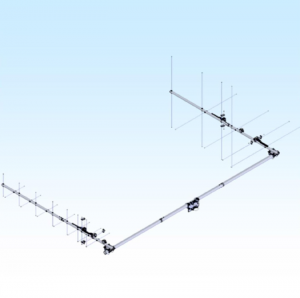
ARISS NEWS
Amateurs and others around the world may listen in on contacts between amateurs operating in schools and allowing students to interact with astronauts and cosmonauts aboard the International Space Station. The downlink frequency on which to listen is 145.800 MHz worldwide.
+ Recently Completed
Lilburn Elementary School, Lilburn, GA, direct via K4RGK
The ISS callsign was NA1SS
The crewmember was Jasmin Moghbeli KI5WSL
The ARISS mentor was K4RGK
Contact was successful: Wed 2024-02-07 14:24:10 UTC
Congratulations to the Lilburn Elementary School students, Jasmin, and mentor K4RGK!
Watch the event here: https://www.youtube.com/watch?v=hlwg2rof0LA
School of Telecommunications Engineering, ETSIT Valencia (Universitat Politecnica de Valencia), Valencia, Spain, direct via EA5RKP
The ISS callsign was OR4ISS
The crewmember was Loral O’Hara KI5TOM
The ARISS mentor was IKØUSO
Contact was successful: Fri 2024-02-09 08:12:46 UTC
Congratulations to the ETSIT Valencia students, Loral, and mentor EA5RKP!
Watch for Livestream at https://www.youtube.com/watch?v=_IMdKcM2Fw8
+ Upcoming Contacts
School TBD, Russia, direct via TBD
The ISS callsign is presently scheduled to be RSØISS
The scheduled crewmember is Nikolay Chub
The ARISS mentor is RV3DR
Contact is go for 2024-02-15 08:20 UTC
B. Russell High School, Rome, Italy, direct via IKØUSO)
The ISS callsign is presently scheduled to be OR4ISS
The scheduled crewmember is Jasmin Moghbeli KI5WSL
The ARISS mentor is IKØWGF
Contact is go for: Thu 2024-02-15 11:32:10 UTC
Baltic Federal University. I. Kanta, Kaliningrad, Russia, direct via TBD
The ISS callsign is presently scheduled to be RSØISS
The scheduled crewmember is Konstantin Borisov
The ARISS mentor is RV3DR
Contact is go for Fri 2024-02-16 09:10 UTC
The Service Module radio is temporarily stowed.
As always, if there is an EVA, a docking, or an undocking; the ARISS radios are turned off as part of the safety protocol.
The crossband repeater continues to be active (145.990 MHz up {PL 67} & 437.800 MHz down). If any crewmember is so inclined, all they have to do is pick up the microphone, raise the volume up, and talk on the crossband repeater. So give a listen, you just never know.
Note, all times are approximate. It is recommended that you do your own orbital prediction or start listening about 10 minutes before the listed time.
The latest information on the operation mode can be found at https://www.ariss.org/current-status-of-iss-stations.html
The latest list of frequencies in use can be found at https://www.ariss.org/contact-the-iss.html
[ANS thanks Charlie Sufana, AJ9N, one of the ARISS operation team mentors for the above information]
Upcoming Satellite Operations
From Jonathan N4AKV: Next week I am hoping to head to a few of the FM grids, namely FM05, 06, 15, 16, 25, and 26. Plans and dates not finalized yet but will post here and on http://hams.at as usual when I figure them out. Hopefully GC will remain active.
A growing number of satellite rovers are currently engaged in sharing their grid square activations on https://hams.at. By visiting the website, you gain easy access to comprehensive information about the operators responsible for activating specific grid squares. Additionally, you have the ability to assess the match score between yourself and a particular rover for a given pass, while also being able to identify the upcoming satellite passes that are accessible from your location.
[ANS thanks Ian Parsons, K5ZM, AMSAT Rover Page Manager, for the above information]
Hamfests, Conventions, Maker Faires, and Other Events
AMSAT Ambassadors provide presentations, demonstrate communicating through amateur satellites, and host information tables at club meetings, hamfests, conventions, maker faires, and other events.
40th Anniversary Celebration of the Positive Impact of Amateur Radio on Human Spaceflight
Thursday February 22nd through Saturday February 24th, 2024
Center for Space Education: Astronauts Memorial Foundation
Kennedy Space Center, M6-306 405 State Road, FL 32899
https://www.ariss.org/overview.html
2024 CubeSat Developer’s Workshop
April 23-25, 2024
San Luis Obispo, CA
https://www.cubesatdw.org/
Dayton Hamvention 2024
Friday May 17th through Sunday May 19th, 2024
Greene County Fairgrounds and Expo Center
120 Fairground Road
Xenia, OH 45385
https://hamvention.org
AMSAT Ambassador Clint Bradford, K6LCS, says,
Had a marvelous time last night with the South Pasadena (CA) ARC. BUT –
I might have to “tighten up” my trivia questions throughout: They knew the
answers IMMEDIATELY to all of them!!!
Twenty-one members joined via Zoom. The rainstorms here made Zoom-ing the
best-available option for the show.
Next up: Bellingham WA, Orange County CA, and Brea CA!
Think a lively and informative 75-minute presentation on “working the easy
satellites” would be appropriate for your event or club? Just let us know!
Clint Bradford K6LCS
[email protected]
909-999-SATS (7287)
[ANS thanks the AMSAT Events page for the above information]
Want to fly the colors on your own grid expedition?
Get an AMSAT car flag and other neat stuff from our Zazzle store!
25% of the purchase price of each product goes towards Keeping Amateur Radio in Space
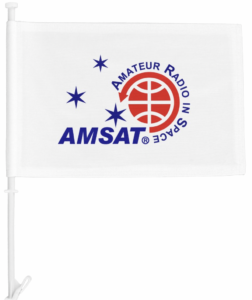
Satellite Shorts From All Over
+ The SpaceX Crew Dragon spacecraft Freedom successfully concluded its three-week private astronaut mission to the International Space Station (ISS) by splashing down off the Florida coast on February 9th. Commanded by former NASA astronaut Michael López-Alegría, KE5GTK, the Ax-3 mission lifted off on January 18 and included pilot Walter Villadei, IUØRWB, along with mission specialists Alper Gezeravcı, KJ5DIY, and Marcus Wandt, KJ5COO, who represented the European Space Agency. Despite a nearly week-long extension due to poor weather, the spacecraft’s reentry and descent went according to plan, marking Axiom Space’s third private astronaut mission to the ISS. This mission served as a precursor to Axiom’s installation of commercial modules on the ISS, which will form the basis of a future standalone space station. Additionally, SpaceX announced plans for five or six crewed missions in 2024, including Ax-4 and NASA’s Crew-8 and Crew-9 missions, while the Polaris Dawn mission, led by billionaire Jared Isaacman, is expected to launch in the summer for a historic Crew Dragon spacewalk. (ANS thanks Jeff Foust, SpaceNews, for the above information)
+ NASA’s PACE satellite, aimed at studying ocean health, air quality, and climate change effects, was successfully launched into orbit at 1:33 a.m. EST on February 8th aboard a SpaceX Falcon 9 rocket from Cape Canaveral Space Force Station in Florida. Signal acquisition was confirmed five minutes post-launch, with the satellite performing as anticipated. With instruments to study microscopic life in oceans and particles in the atmosphere, PACE aims to uncover crucial factors affecting global warming, aligning with the Biden-Harris Administration’s climate agenda. The satellite’s capabilities include tracking phytoplankton distribution globally and monitoring atmospheric aerosols and cloud properties. PACE’s data will significantly advance understanding of the Earth system, particularly in relation to climate change impacts on oceans and phytoplankton dynamics, offering valuable insights for coastal communities and industries. (ANS thanks NASA for the above information)
+ NASA is preparing for the launch of Intuitive Machines’ first lunar lander, Nova-C, as part of the CLPS initiative and Artemis campaign. The launch is scheduled for no earlier than 12:57 a.m. on February 14 from Kennedy Space Center in Florida. The Nova-C lander is expected to land on the Moon on February 22, carrying NASA science and technology instruments for various purposes. Live launch coverage will be available on NASA+, NASA Television, the NASA app, and the agency’s website, starting from February 12. The payload includes instruments focusing on plume-surface interactions, space weather/lunar surface interactions, radio astronomy, precision landing technologies, and communication/navigation for autonomous navigation technologies. NASA’s virtual guest program allows the public to attend the launch virtually, and social media engagement is encouraged with the hashtag #Artemis. The CLPS initiative aims to deliver science and technology to the lunar surface through partnerships with U.S. companies, with a cumulative maximum contract value of $2.6 billion through 2028. (ANS thanks NASA for the above information)
+ Virgin Galactic has temporarily halted its operations after a small part, an alignment pin, unintentionally detached from the mothership of its rocket-powered space plane during the Galactic 06 space tourism flight on January 26. The company assured that the part’s loss did not compromise the mission’s safety. The alignment pin is crucial for pre-flight procedures, ensuring the spaceship aligns with the mothership. Virgin Galactic discovered the issue during routine checks and promptly notified government regulators on January 31. The Federal Aviation Administration (FAA) will conduct a mishap investigation, requiring Virgin Galactic’s final report and corrective actions approval before resuming flights. The alignment pin’s absence did not affect the safety of the successful Galactic 06 mission, and the company plans to provide further updates after the FAA review for the upcoming Galactic 07 mission in the second quarter of 2024. (ANS thanks Jackie Wattles, CNN, for the above information)
+ Ongoing efforts persist in the bid to resolve the critical computer glitch affecting NASA’s Voyager 1, the most distant human-made object in space, which has disrupted telemetry data transmission since November 14. The glitch, impacting the Flight Data Subsystem (FDS) developed five decades ago, has prevented access to vital information regarding the spacecraft’s propulsion, power, and control systems. Suzanne Dodd, the Voyager project manager, acknowledges the severity of the situation, emphasizing the urgency of addressing the issue due to Voyager 1’s age and declining nuclear battery power. A dedicated team of experts is actively crafting a plan to transmit commands aimed at isolating and potentially correcting the corrupted FDS memory. The unique challenge lies in the absence of simulators for testing commands, making decision-making a complex process requiring a delicate balance between thorough analysis and prompt action. Despite the intricate troubleshooting process, NASA remains resolute in its commitment to resolving the issue and ensuring the continued success of the historic Voyager 1 mission. (ANS thanks Stephen Clark, Ars Technica, for the above information)
Join AMSAT today at https://launch.amsat.org/
In addition to regular membership, AMSAT offers membership to:
* Societies (a recognized group, clubs or organization).
* Primary and secondary school students are eligible for membership at one-half the standard yearly rate.
* Post-secondary school students enrolled in at least half time status shall be eligible for the student rate for a maximum of 6 post-secondary years in this status.
* Memberships are available for annual and lifetime terms.
Contact info [at] amsat.org for additional membership information.
73 and remember to help Keep Amateur Radio in Space!
This week’s ANS Editor, Mitch Ahrenstorff, ADØHJ
ad0hj [at] amsat.org
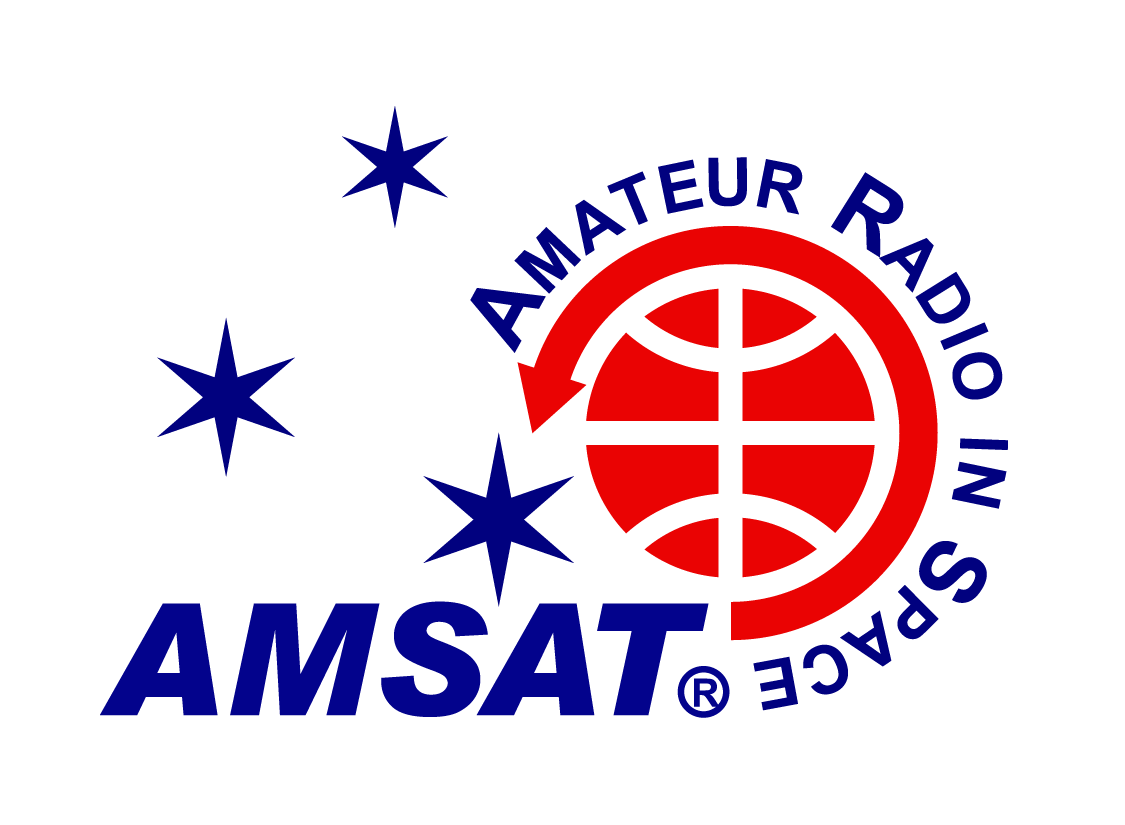
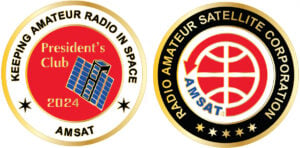
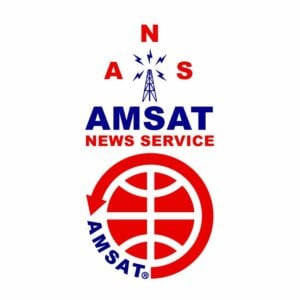
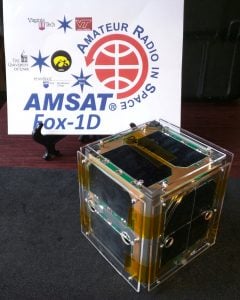
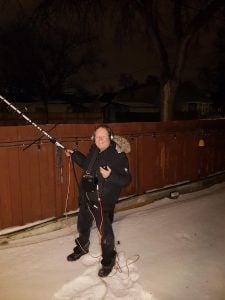
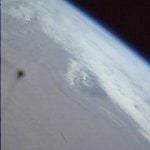 pictures, with the last photos received on September 19, 2020. An archive of all of the photos captured by ground stations can be found at
pictures, with the last photos received on September 19, 2020. An archive of all of the photos captured by ground stations can be found at 